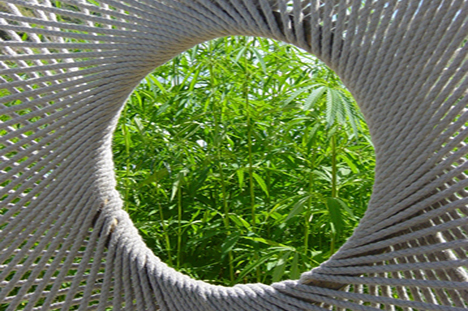By Christine Maddox
Source: livinggreenmag.com

Slowly, the battle to reconstitute industrial hemp has been sweeping across the nation. States such as Colorado now have committees to govern the inspection of industrialized hemp to ensure its proper growth and safety. The committee in Colorado has until the beginning of 2014 to devise a method in which to register prospective farmers.
Even research conducted from colleges and universities for the use of industrial hemp has been approved in a very close eight-vote margin. Many other states are joining this collection of hemp production and future development as legislature is being passed to enable the industrialization of this misunderstood plant.
Kentucky is the latest of 19 states to make industrial hemp legal. Why doesn’t the U.S. government understand the difference between the hemp that helped us win World War II—and marijuana joints?
Although hemp is nearly identical to marijuana, it is indeed a separate plant. The THC levels within hemp are miniscule in comparison to its twin. Because these two plants are so closely related, the have been both deemed as “marijuana,” although they are significantly different.
What are some good aspects we can see in the future for hemp farmers that can affect the environment in a positive way?
1. Health Benefits - Hemp seeds contain a great deal of omega-6 and omega-3 fatty acids, which promote various health benefits for body and mind. Proteins and minerals contained within these seeds also promote healthier bone structure and improved skin conditions as they are loaded with high levels of calcium, magnesium, iron and zinc.
2. Replacing Wood - You may have heard how a single acre of hemp can produce as much materials as four acres of trees. This is partially because a single acre of hemp can be harvested up to four times per year. The fibers of hemp can be used to replace many of the products made from trees such as paper while adding a great deal of longevity to the paper’s use.
3. Heartiness - Hemp can be grown in nearly any environment without the use of toxic chemicals, pesticides or the use of hazardous weed killer. The plant can survive with prolonged exposure to drought allowing farmers to still cultivate the crop even in some of the most barren of locations.
4. Plastics - Although humankind has embraced recycling plastics, hemp plastic can be manufactured to be 100-percent biodegradable. This could greatly reduce the amount of hazardous components that are constantly thrown away regardless of recycling methods. Plastics using hemp fibers as a reinforcing agent have been found to be up to ten times stronger than petroleum-based applications. This could greatly improve construction and durability of specific items to reduce the amount of refuse from breakage.
5. Fuels - Hemp oil has been used in the past to illuminate everything from lanterns to fueling some of the earliest of automobiles. As there would be no drilling, hemp oil could be achieved without further destruction of the Earth’s crust through fracking methods or oil slicks to worry about in the Gulf of Mexico.
A handful of states already have methods and regulations in place for the production of medicinal marijuana and recent laws have been passed to legalize the drug in specific amounts for use by the general public. As hemp has a severely limited THC level, many speculate that it never should have been deemed as illegal in the first place. During the development of the country, and for a brief time during World War II, farming hemp was a way of life. It may only be a matter of time before we benefit from the cultivations of the past.
Christine Maddox is currently pursuing her Master’s degree from University of Texas as well as blogging for www.4nannies.com. She loves to write anything related to parenting, kids, nanny care etc. She can be reached via email at: christine.4nannies @ gmail.com.
No comments:
Post a Comment